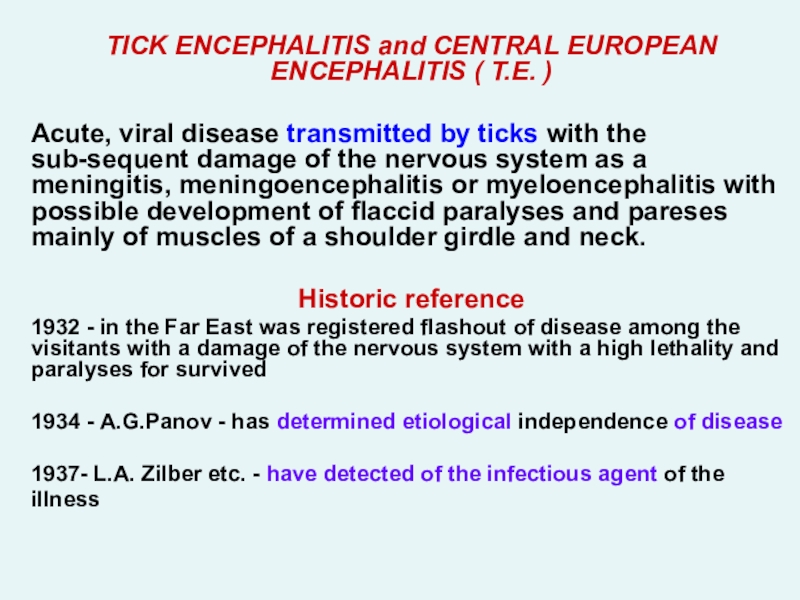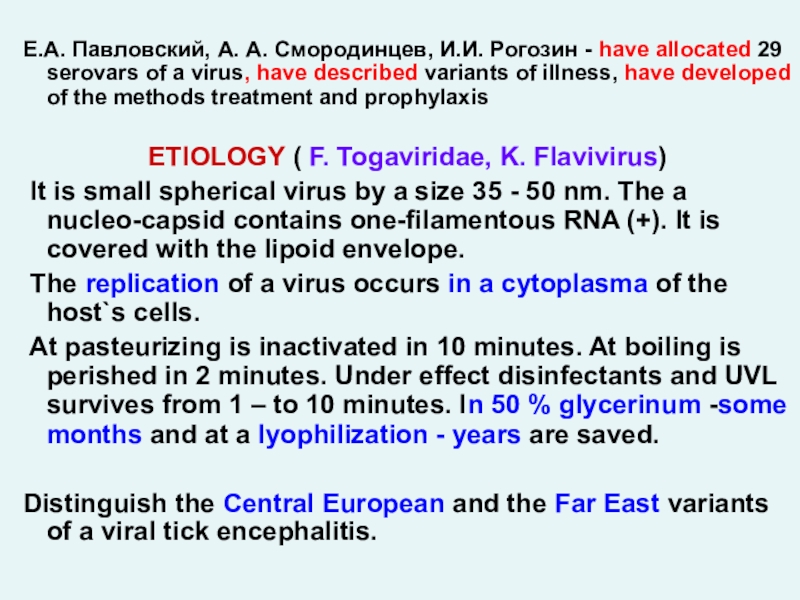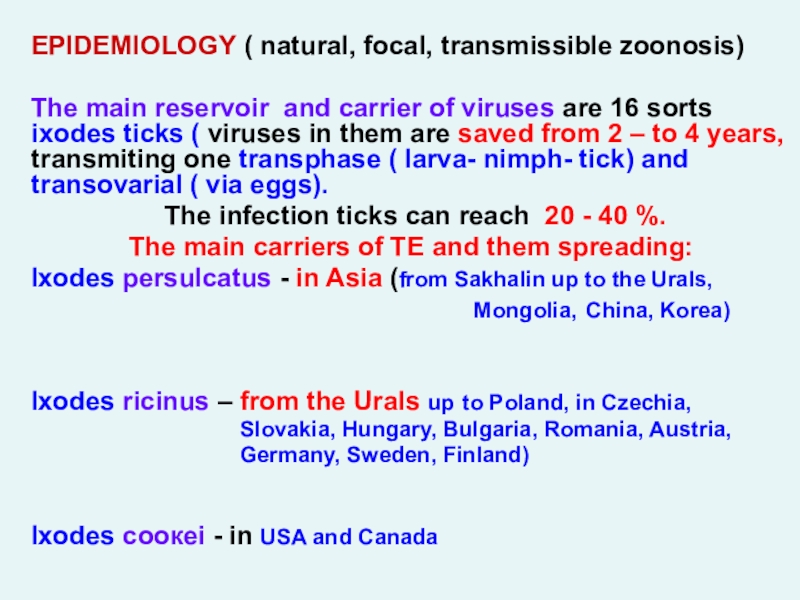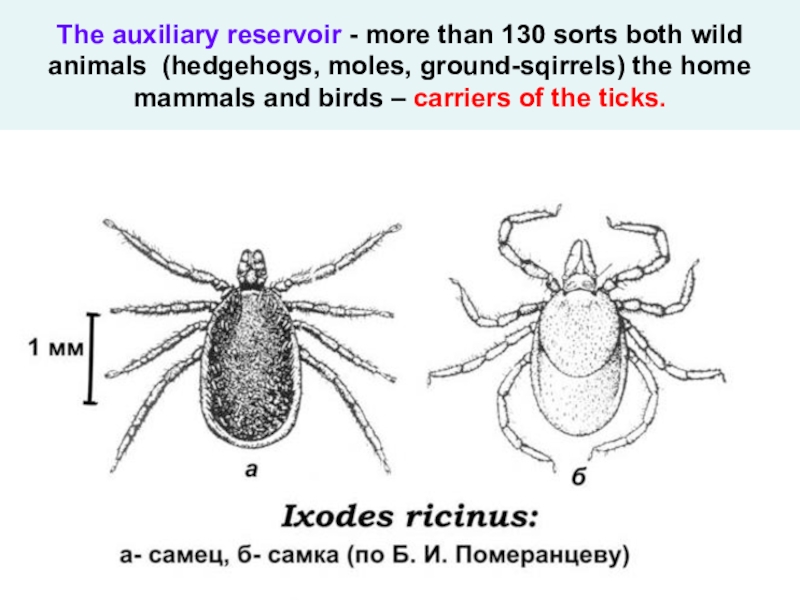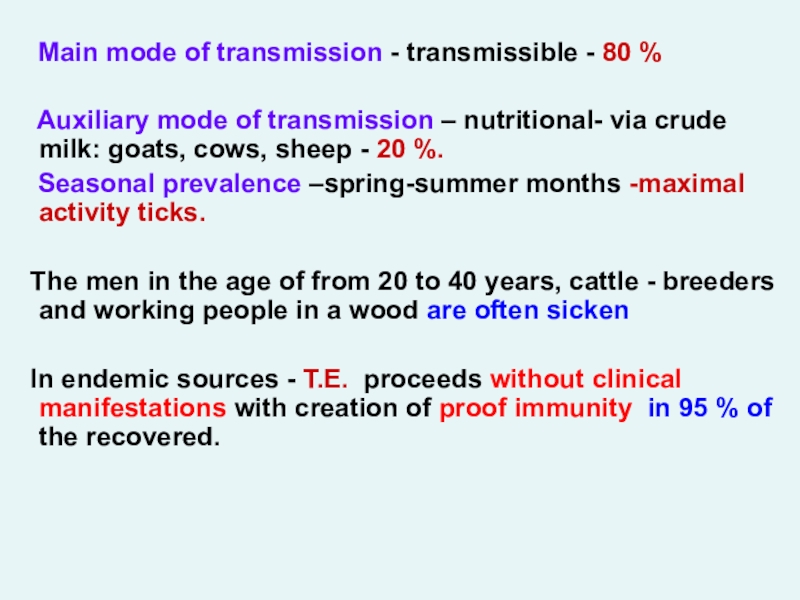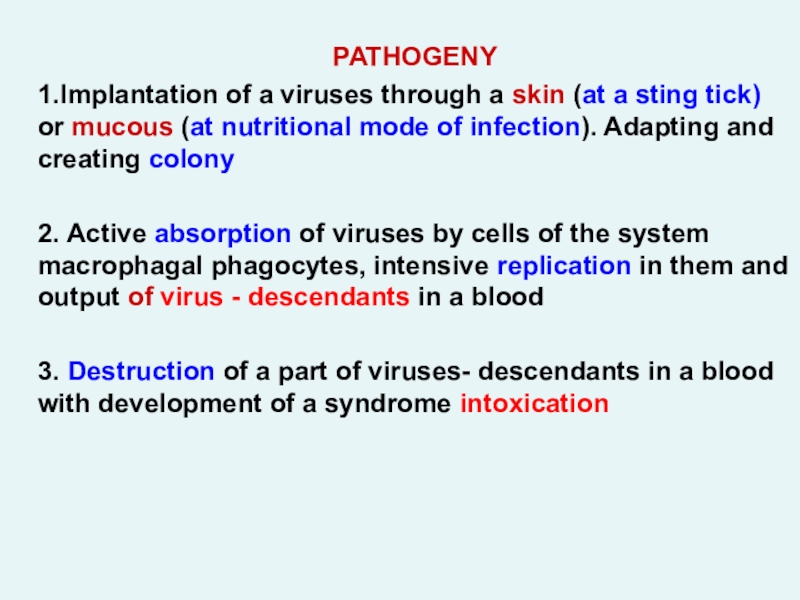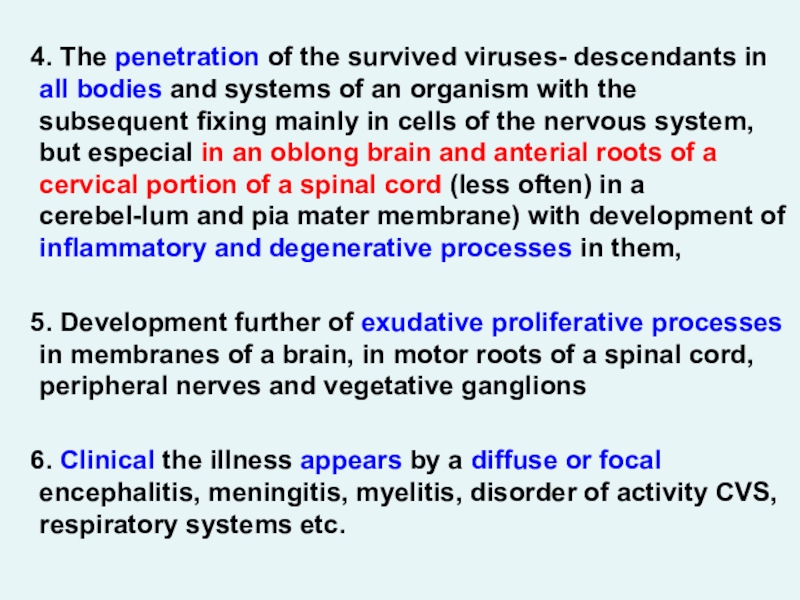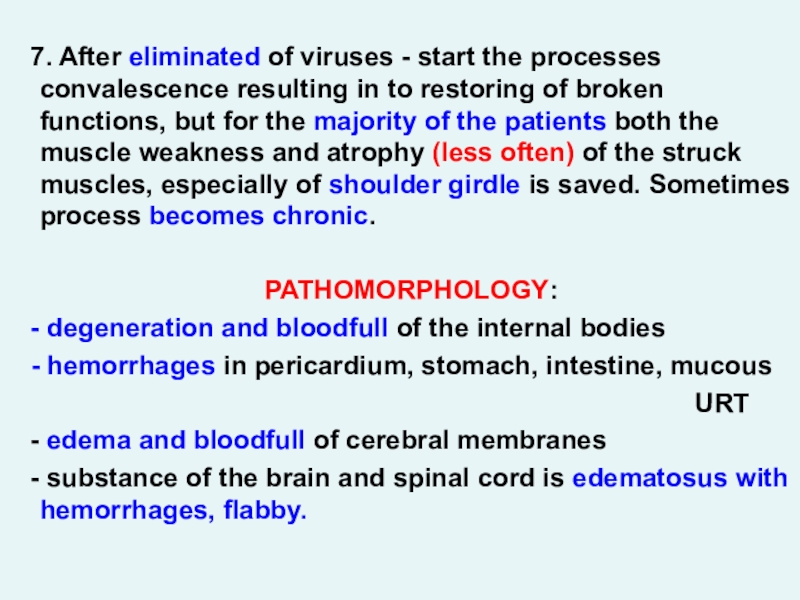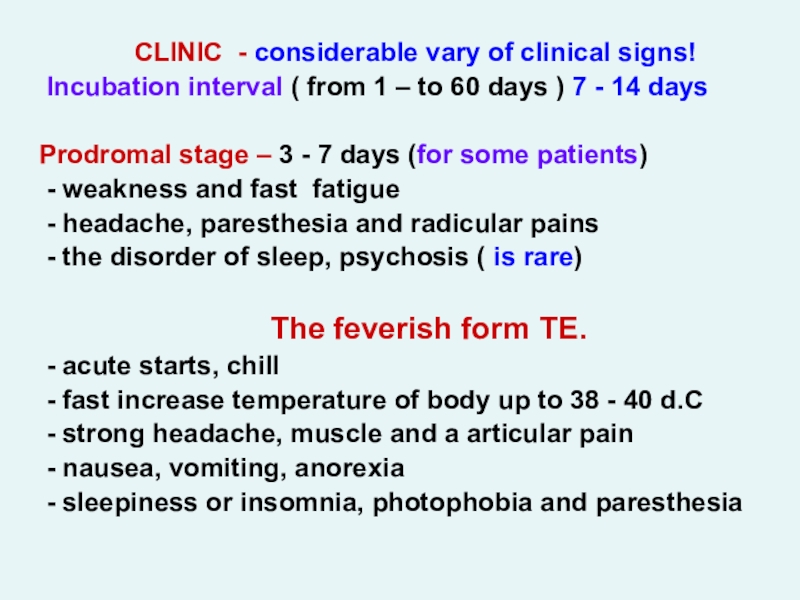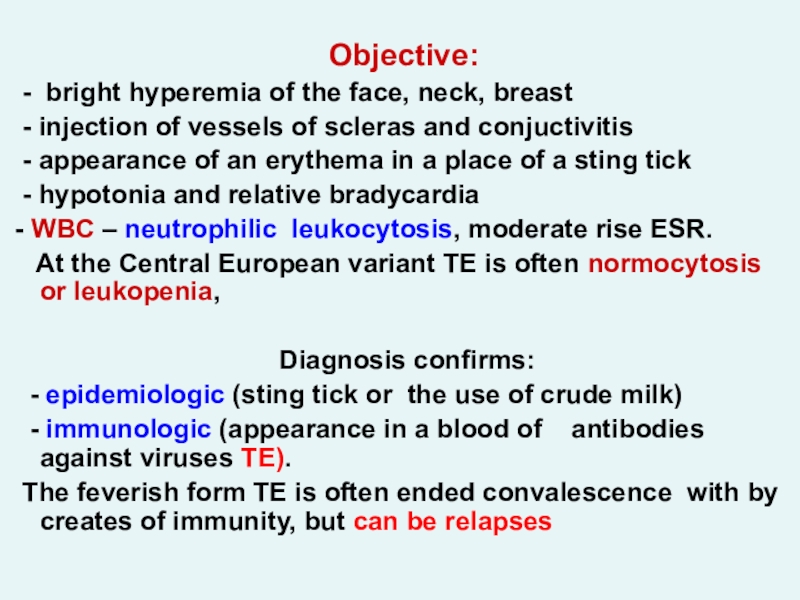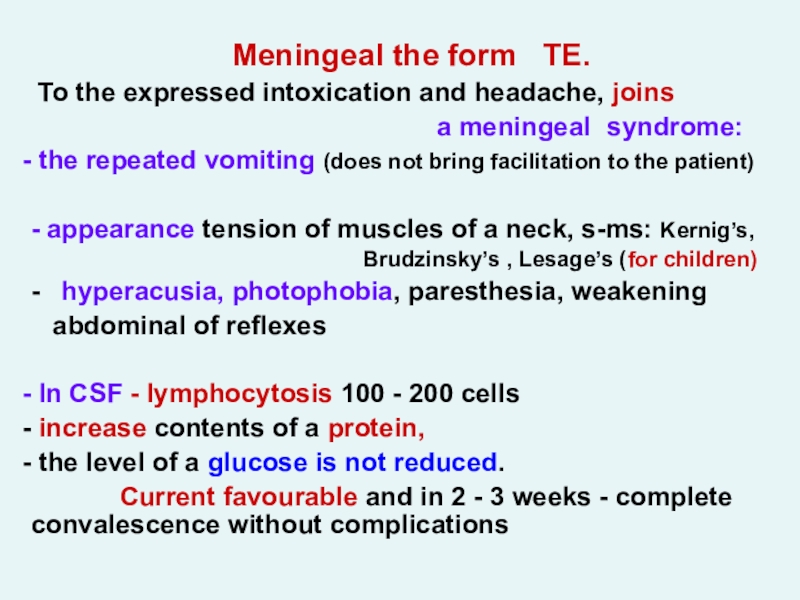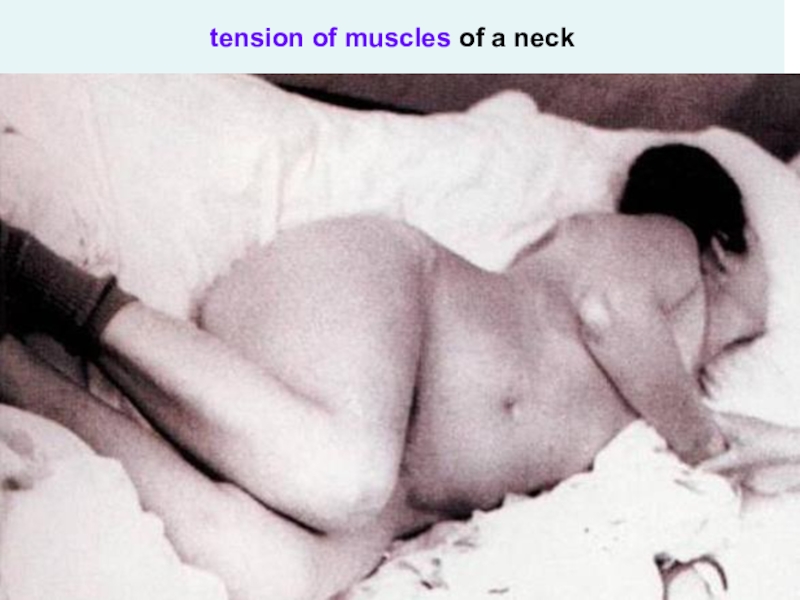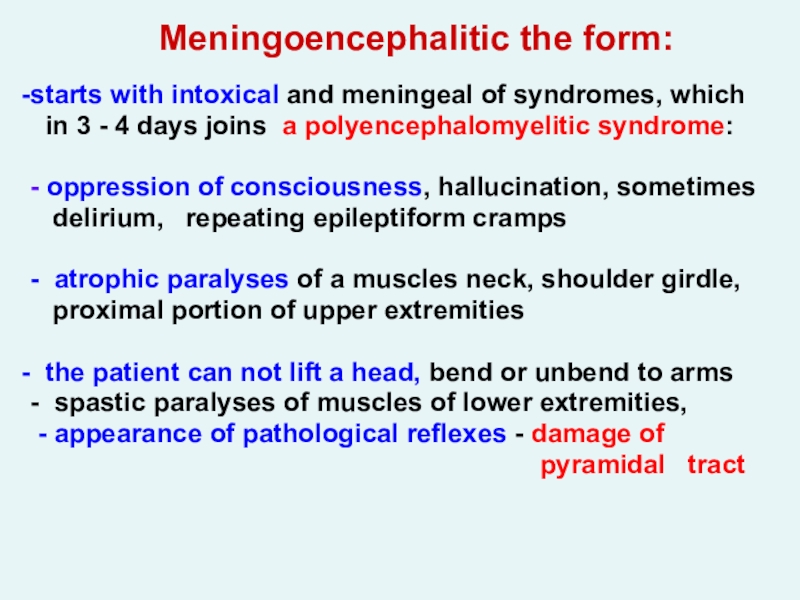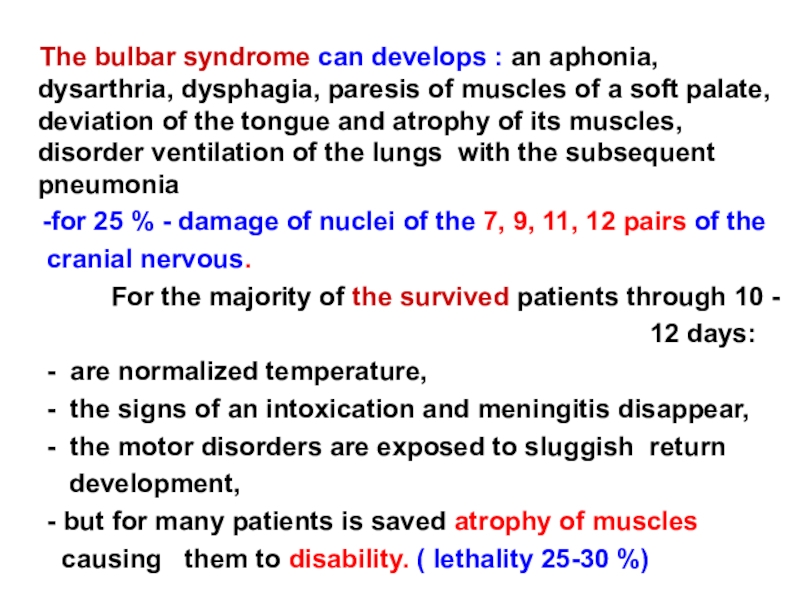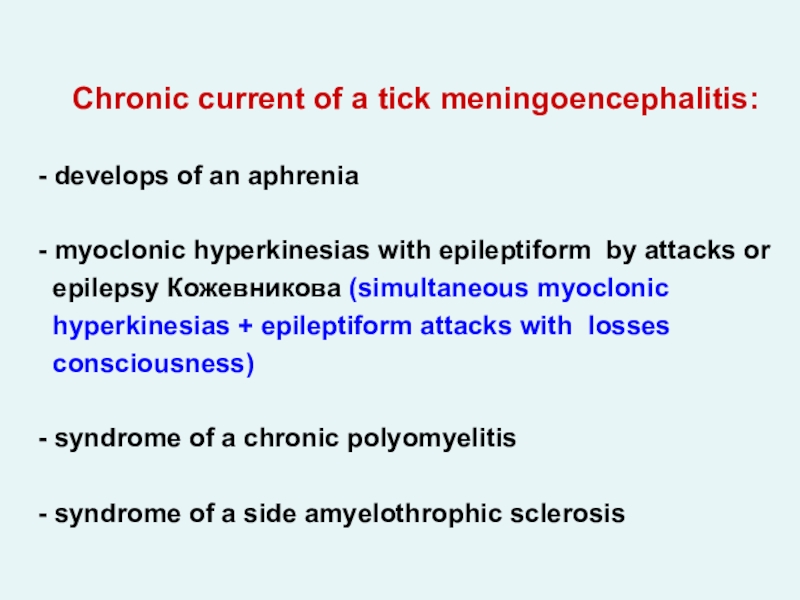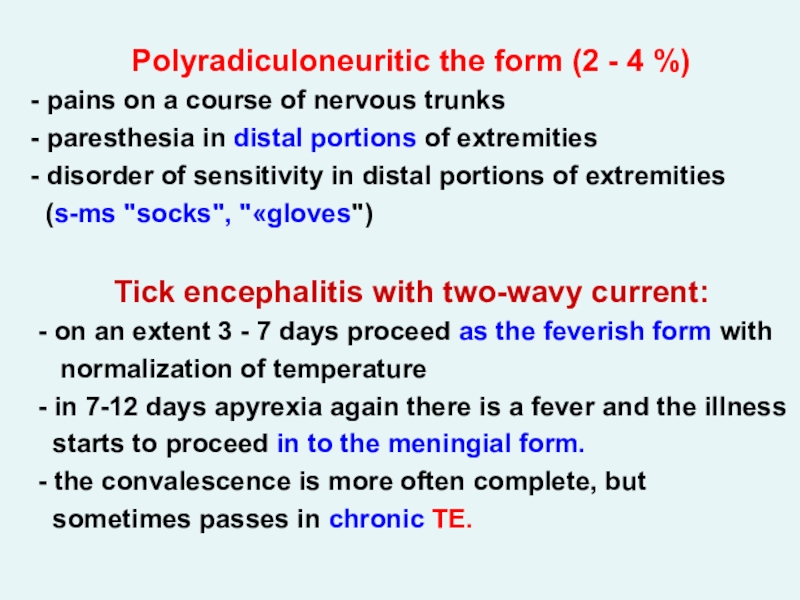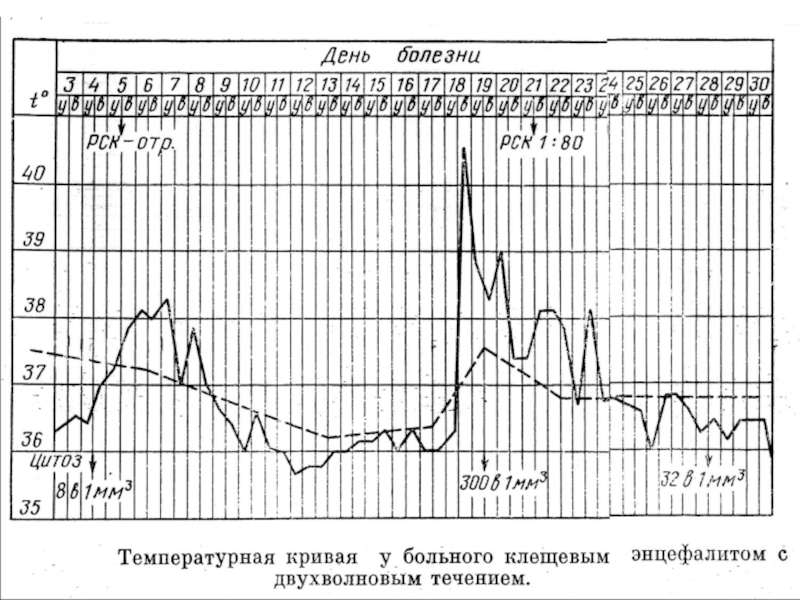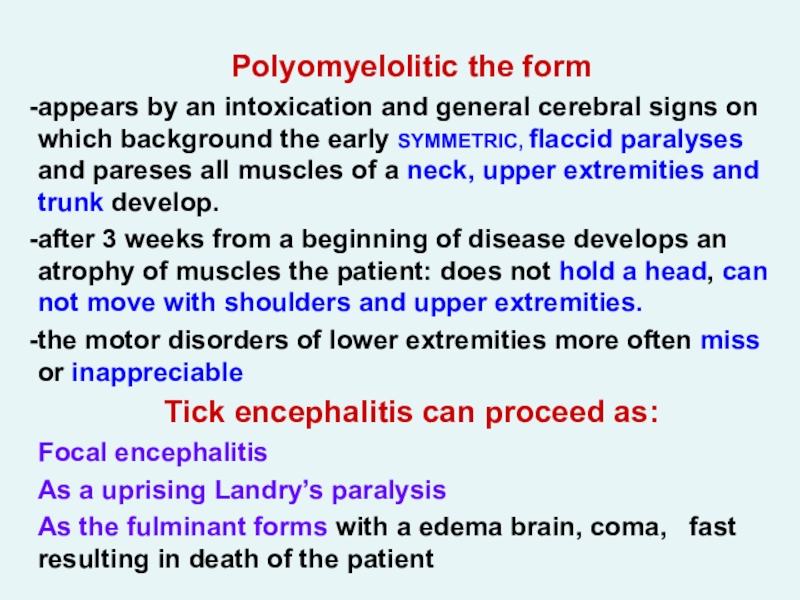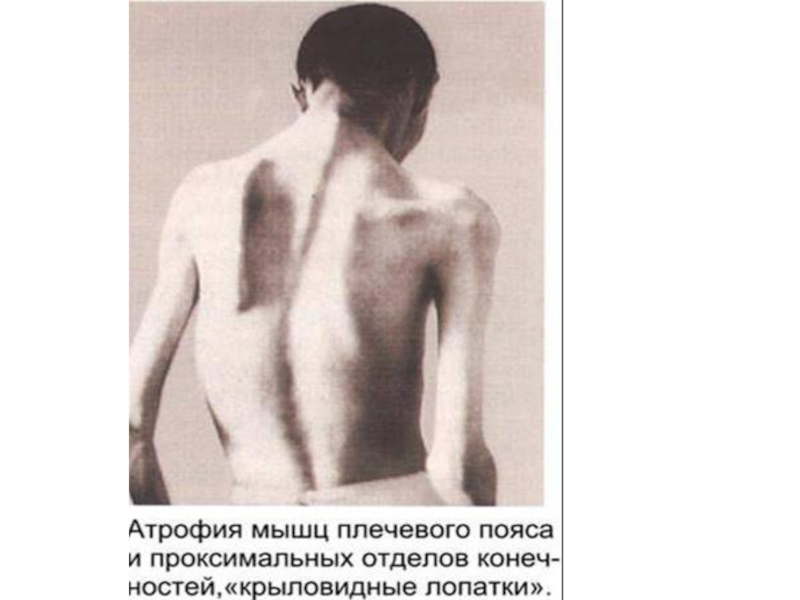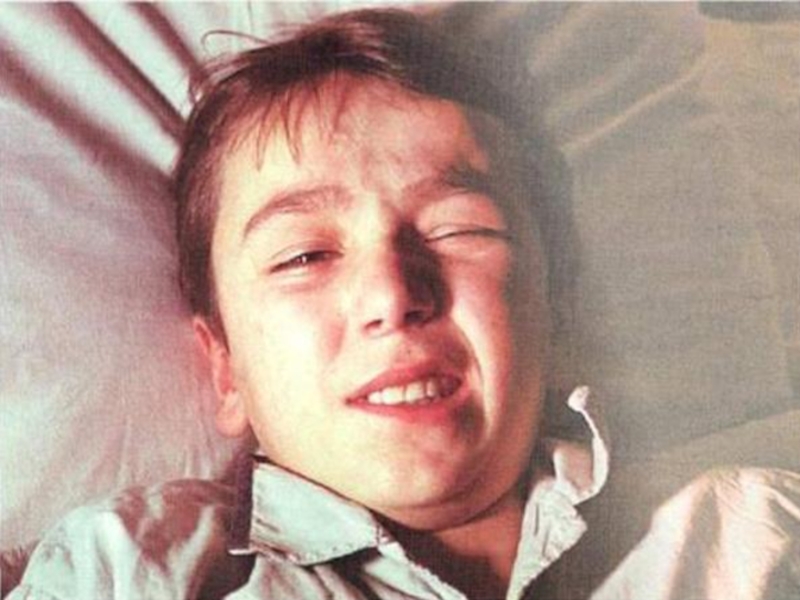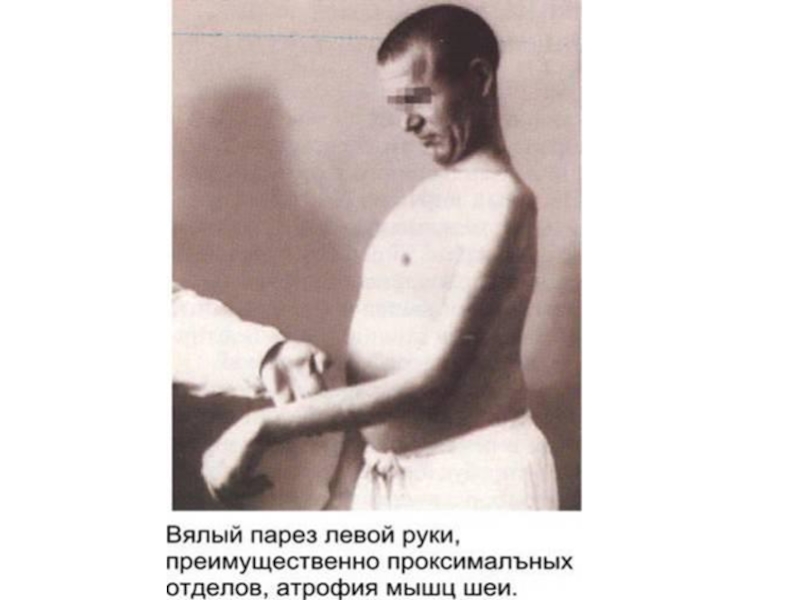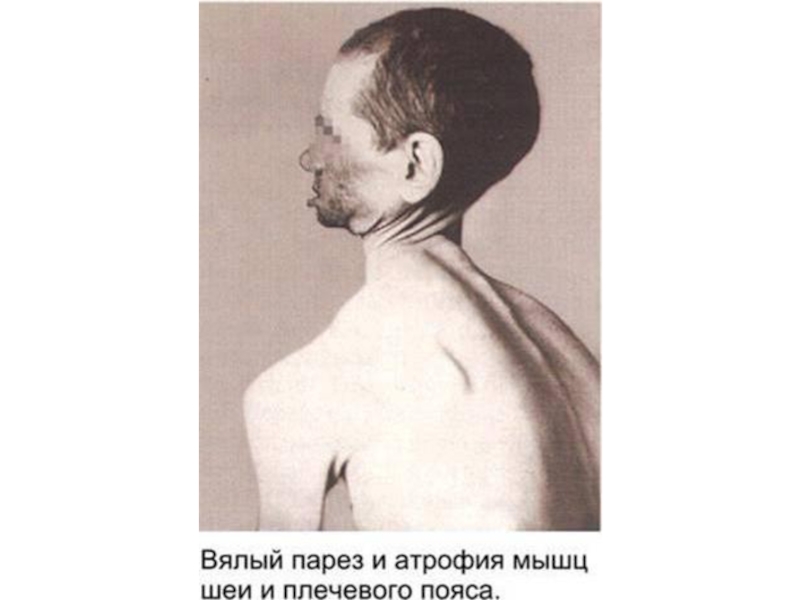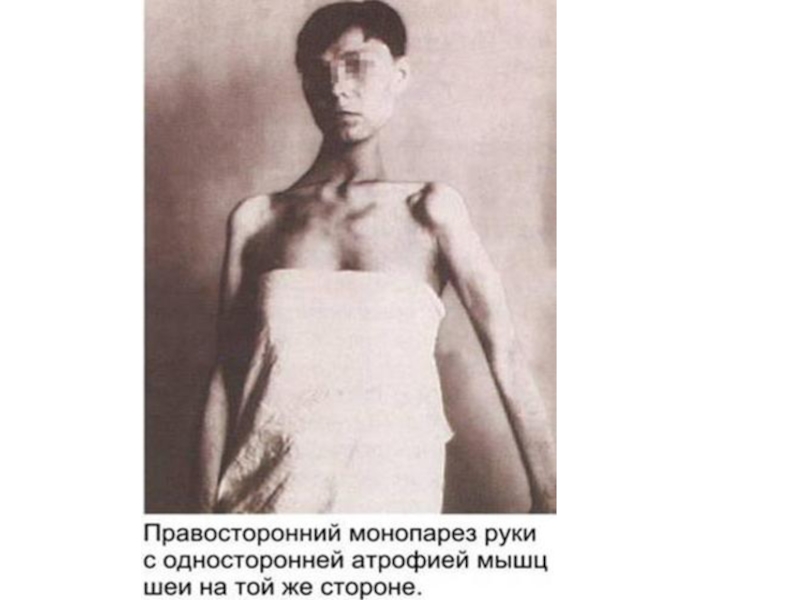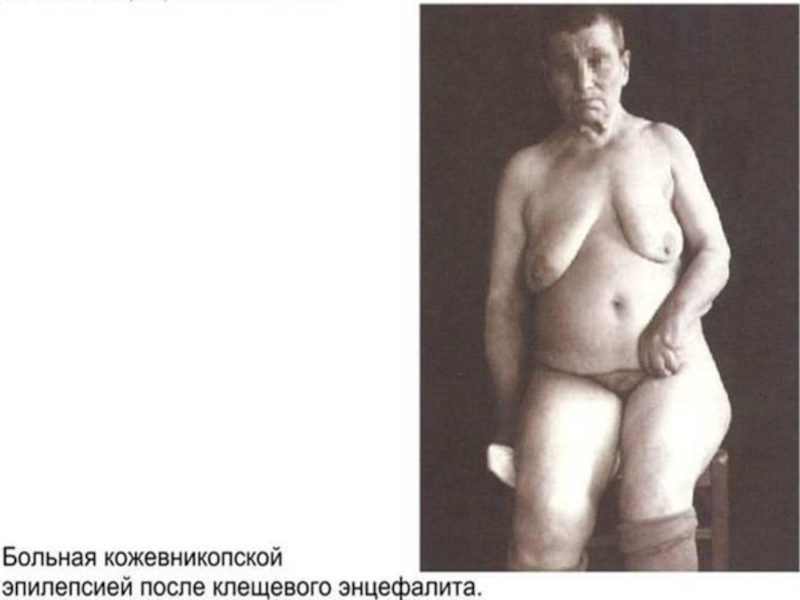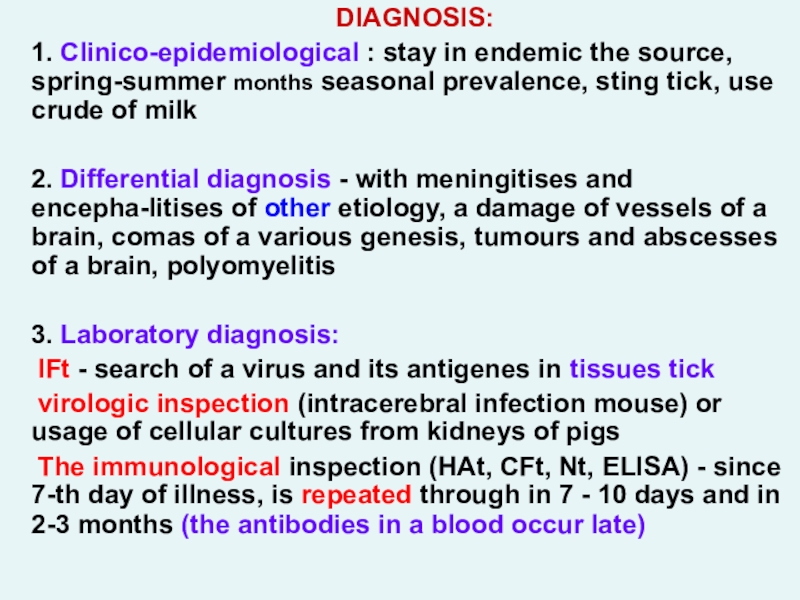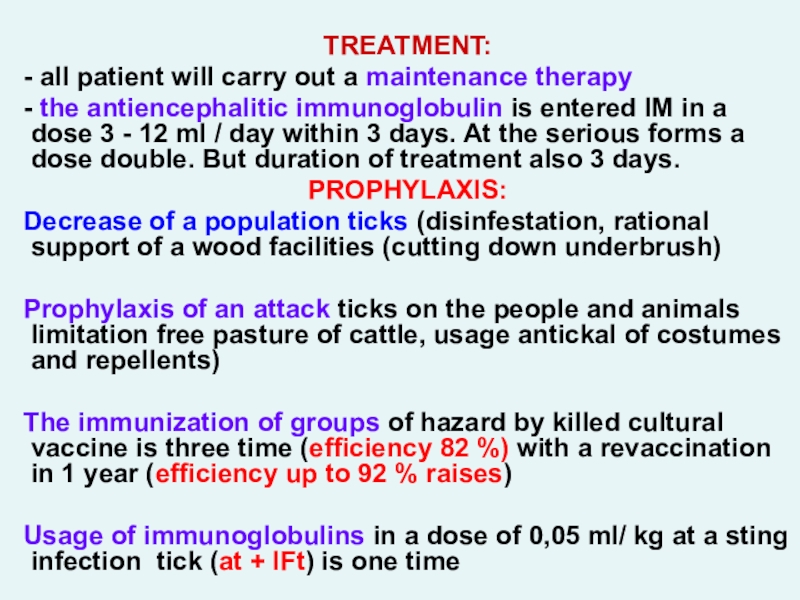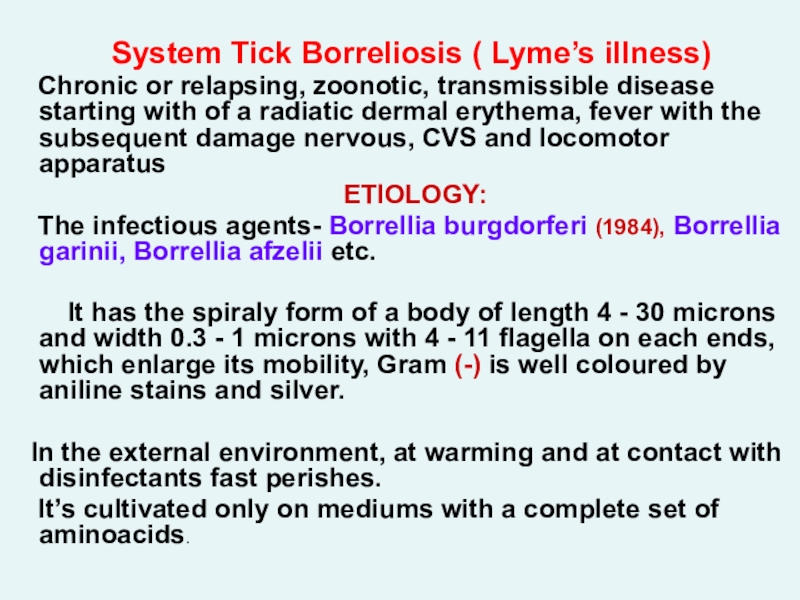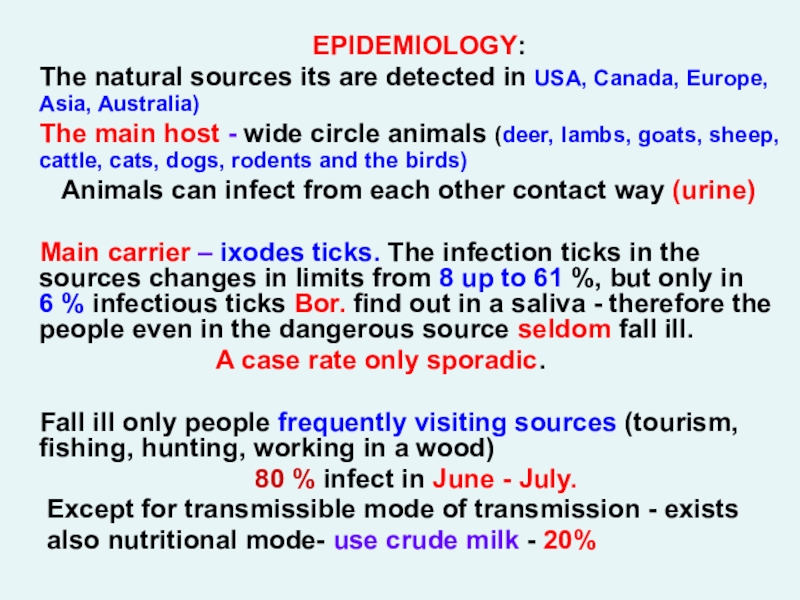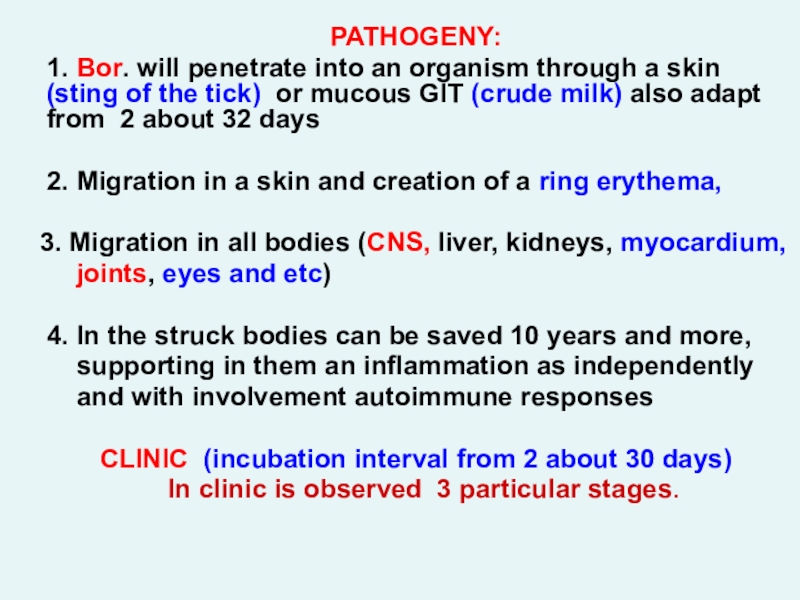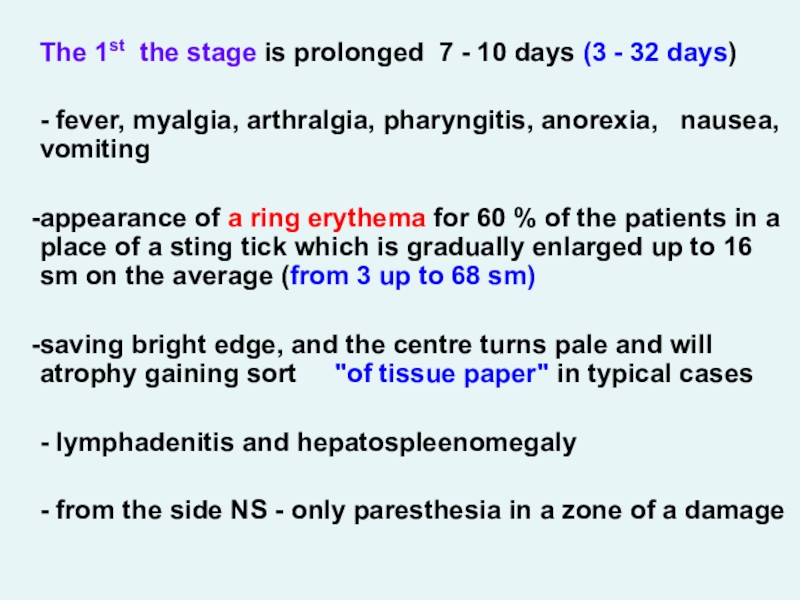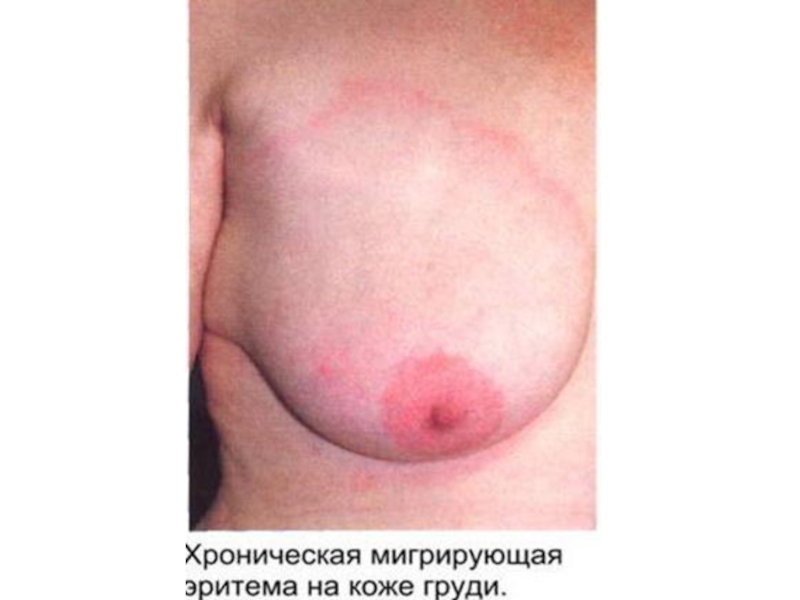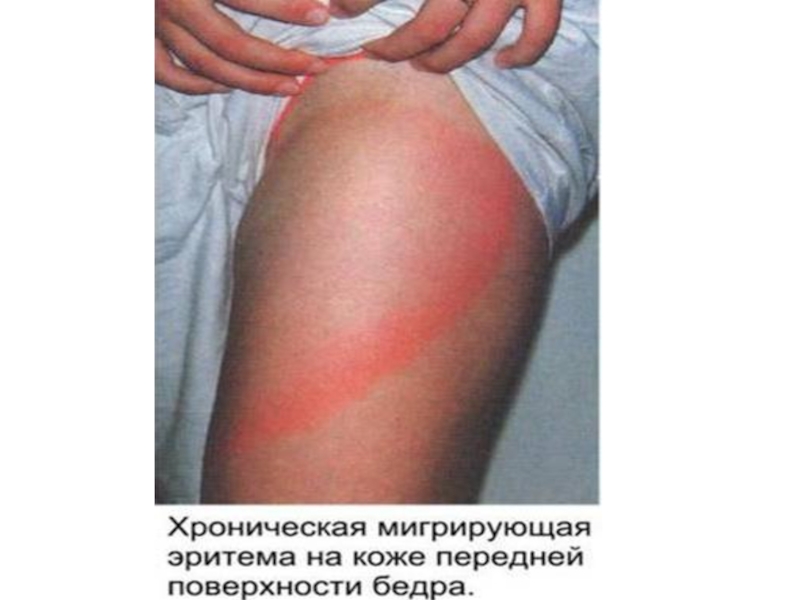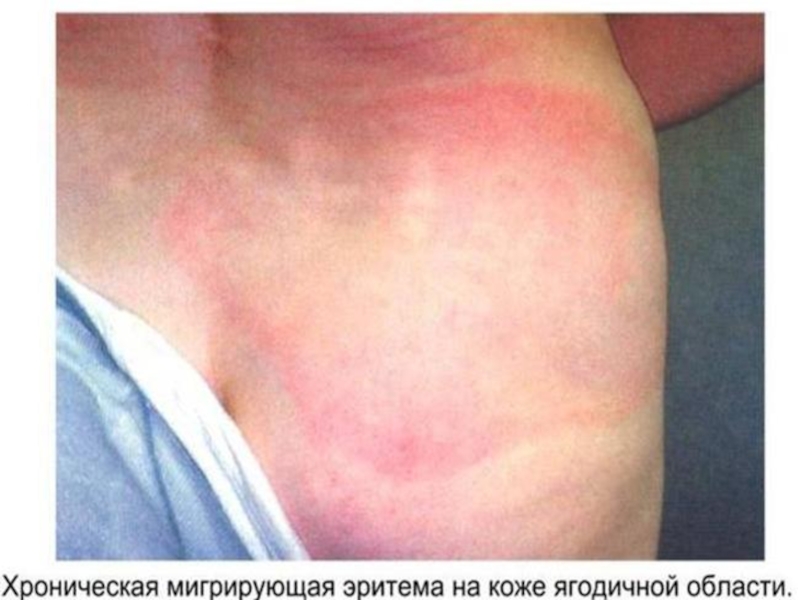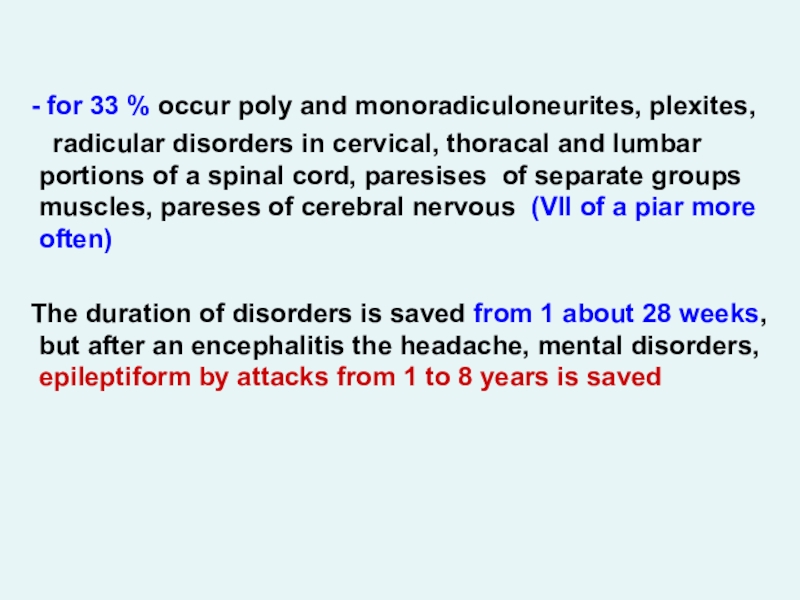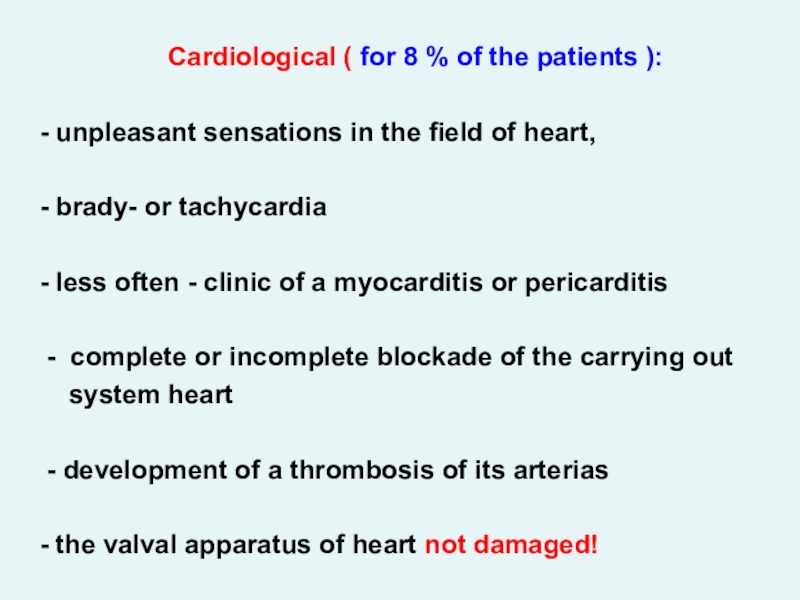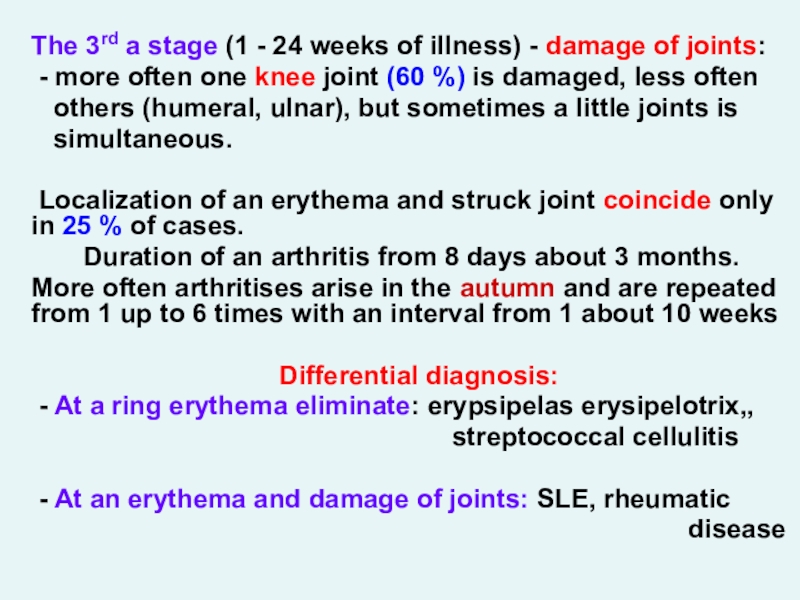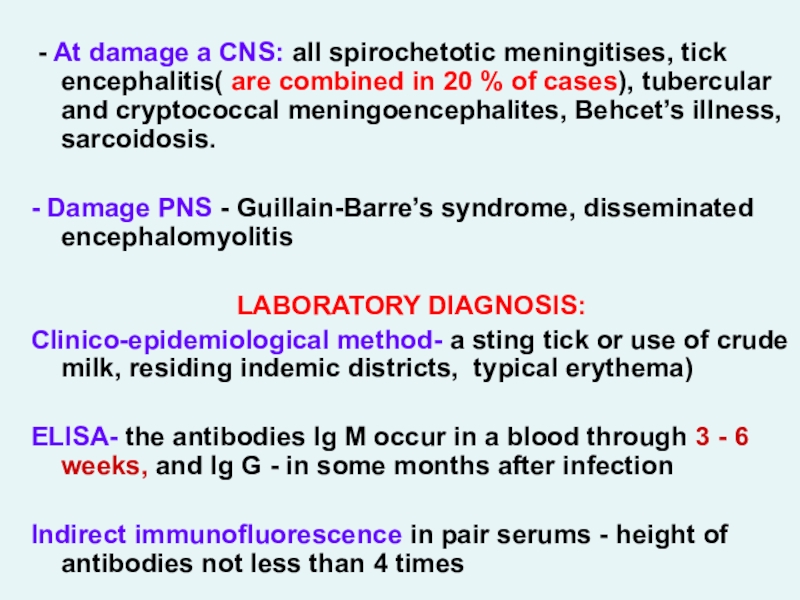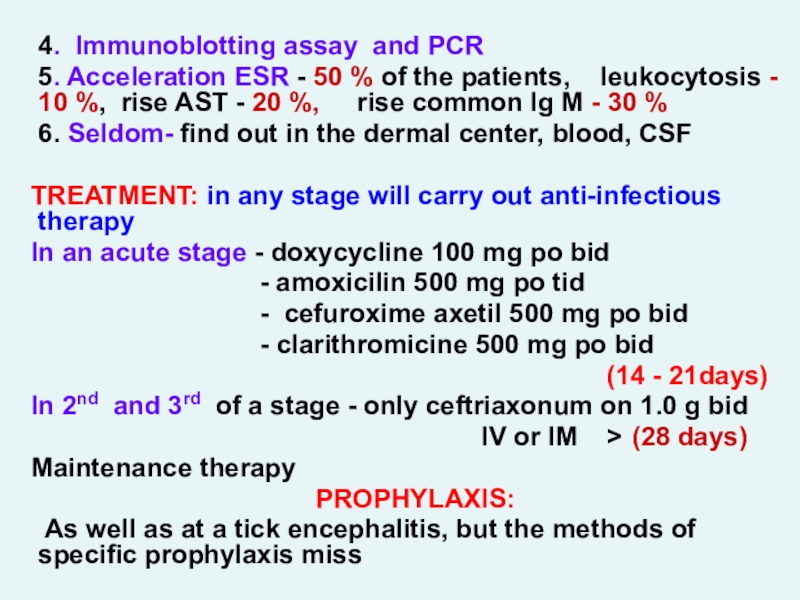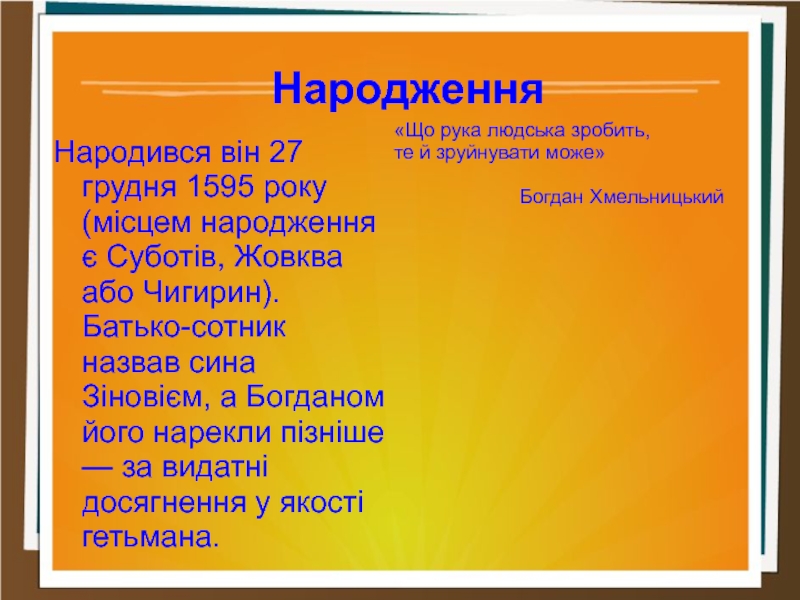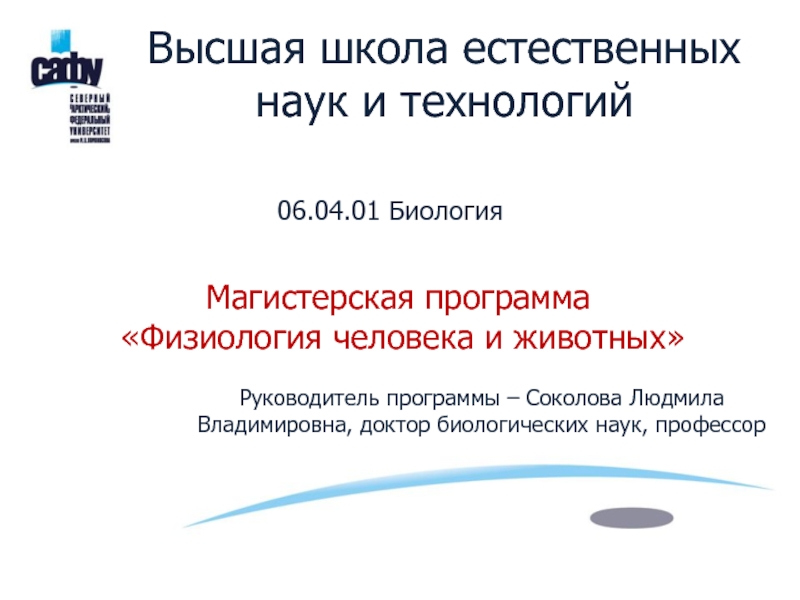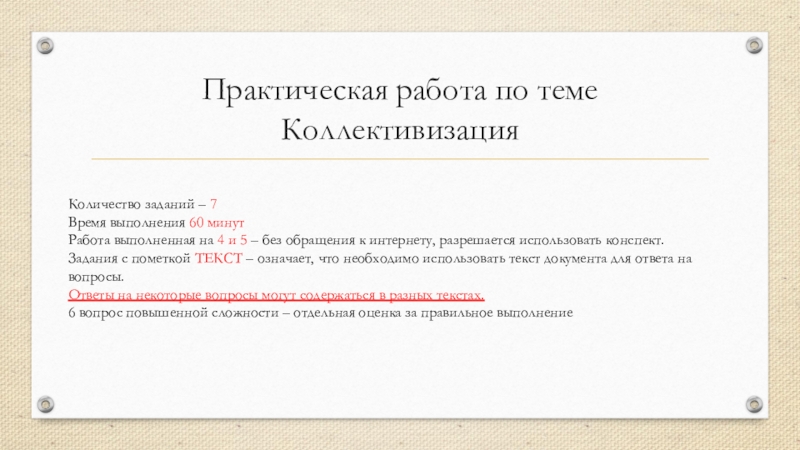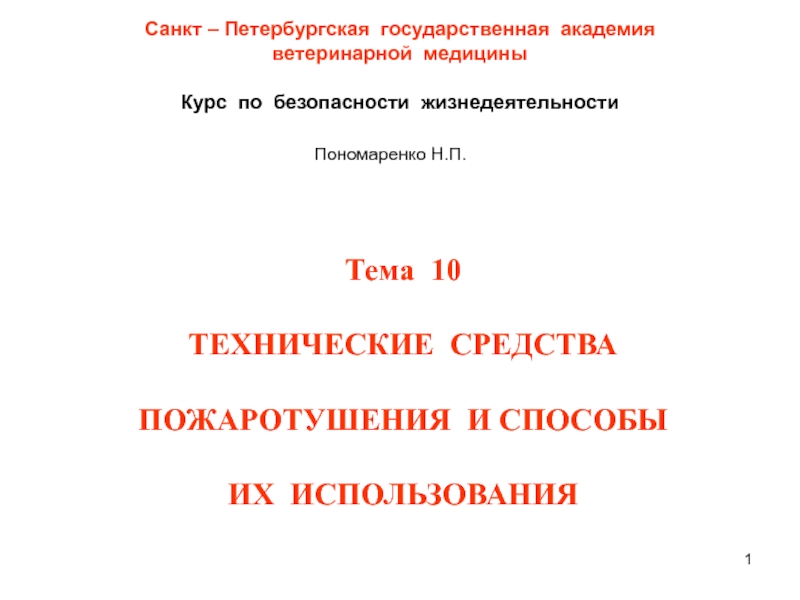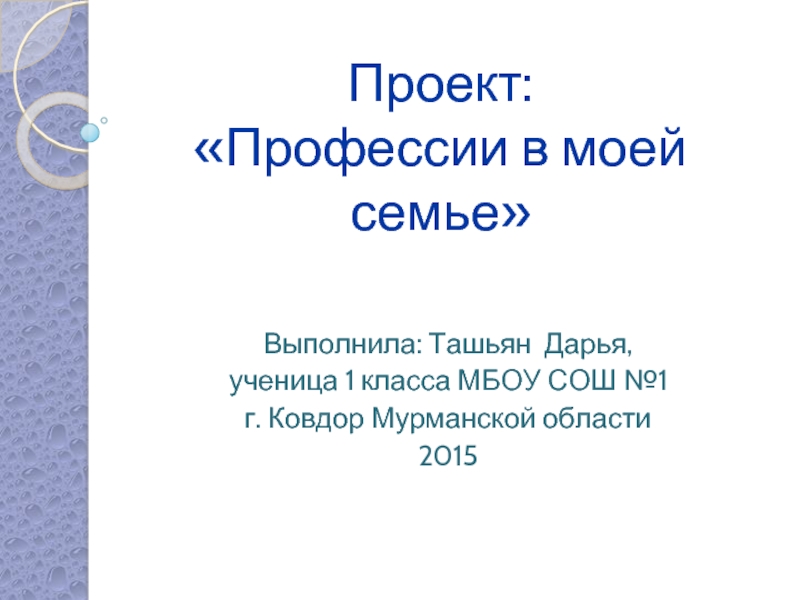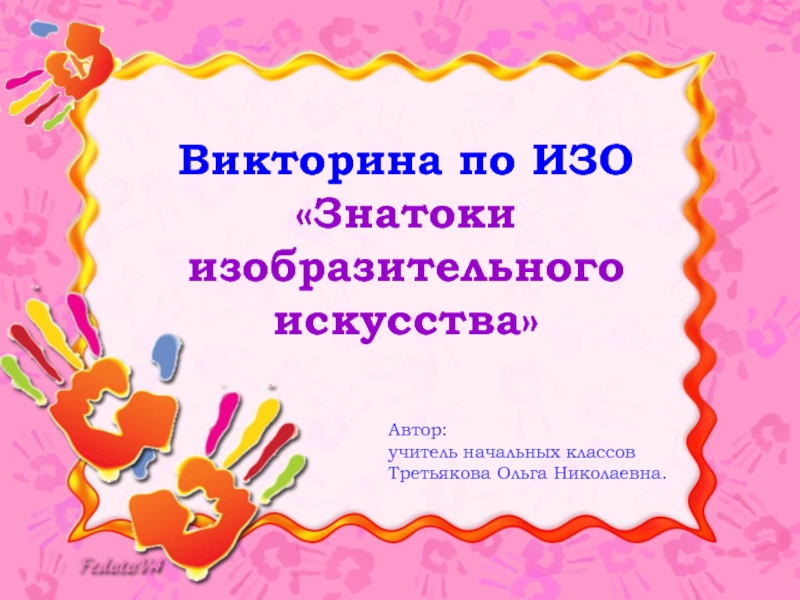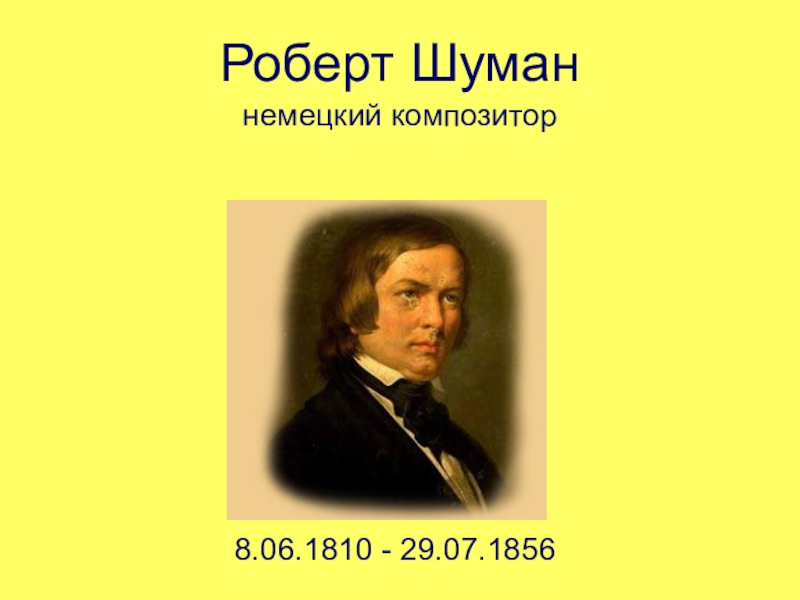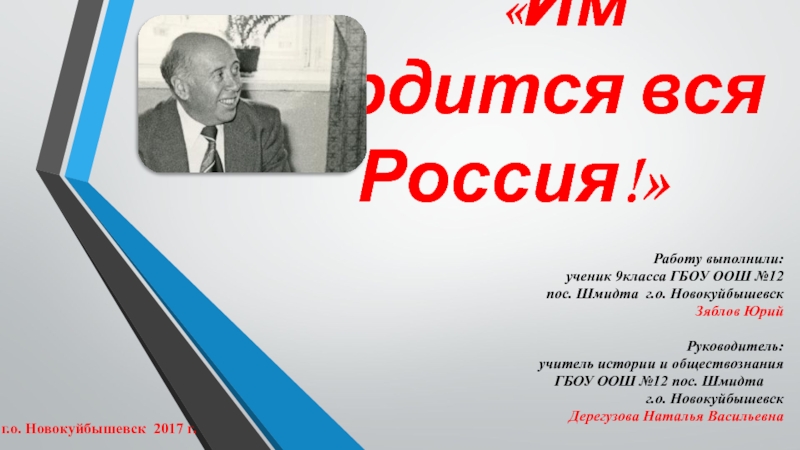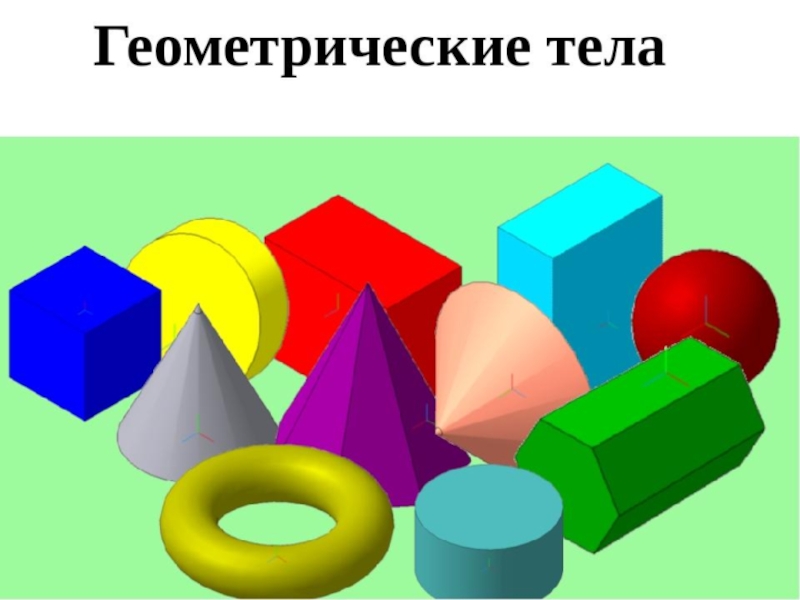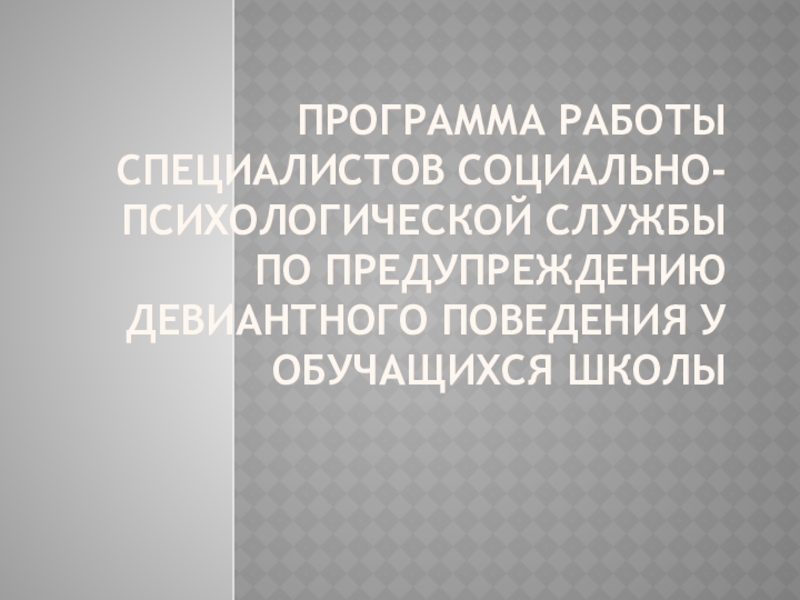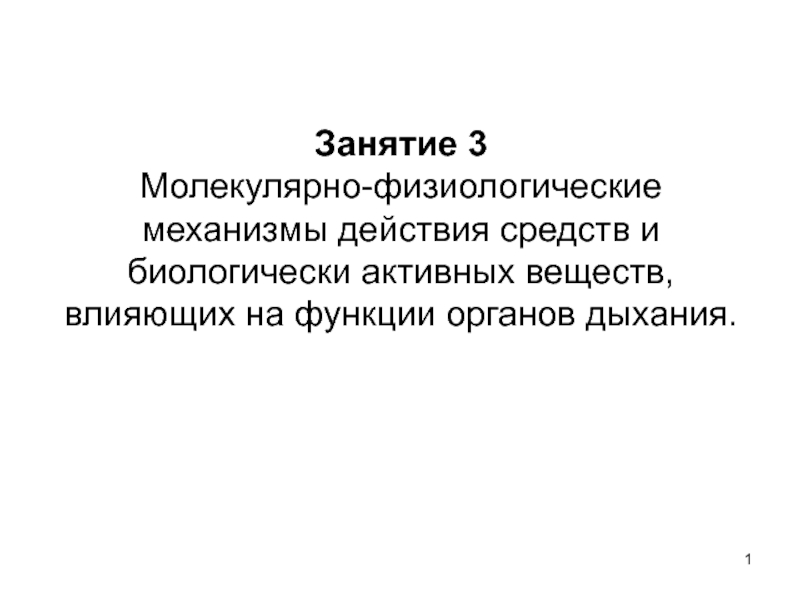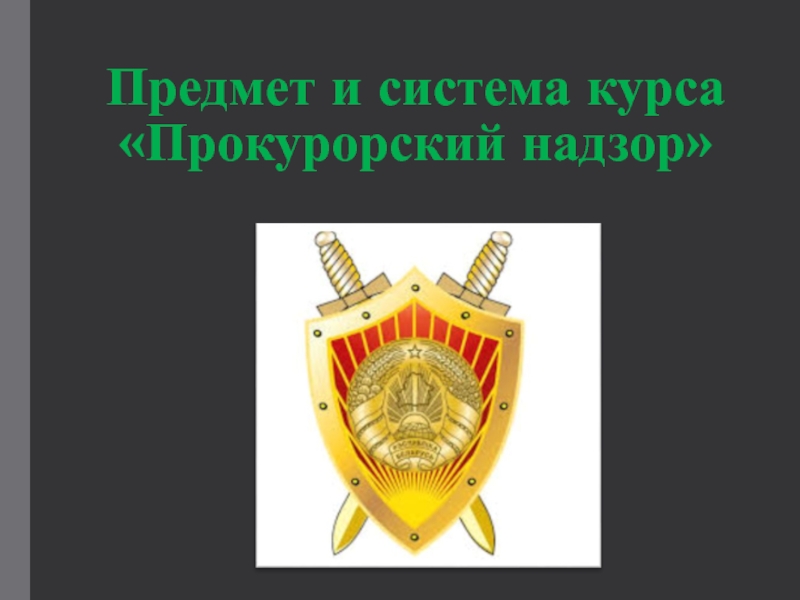Слайд 1
TICK ENCEPHALITIS and CENTRAL EUROPEAN ENCEPHALITIS ( T.E. )
Acute,
viral disease transmitted by ticks with the sub-sequent damage of
the nervous system as a meningitis, meningoencephalitis or myeloencephalitis with possible development of flaccid paralyses and pareses mainly of muscles of a shoulder girdle and neck.
Historic reference
1932 - in the Far East was registered flashout of disease among the visitants with a damage of the nervous system with a high lethality and paralyses for survived
1934 - А.G.Panov - has determined etiological independence of disease
1937- L.А. Zilber etc. - have detected of the infectious agent of the illness
Слайд 2
Е.А. Павловский, А. А. Смородинцев, И.И. Рогозин - have allocated
29 serovars of a virus, have described variants of illness,
have developed of the methods treatment and prophylaxis
ETIOLOGY ( F. Togaviridae, K. Flavivirus)
It is small spherical virus by a size 35 - 50 nm. The a nucleo-capsid contains one-filamentous RNA (+). It is covered with the lipoid envelope.
The replication of a virus occurs in a cytoplasma of the host`s cells.
At pasteurizing is inactivated in 10 minutes. At boiling is perished in 2 minutes. Under effect disinfectants and UVL survives from 1 – to 10 minutes. In 50 % glycerinum -some months and at a lyophilization - years are saved.
Distinguish the Central European and the Far East variants of a viral tick encephalitis.
Слайд 3
EPIDEMIOLOGY ( natural, focal, transmissible zoonosis)
The main reservoir and carrier
of viruses are 16 sorts ixodes ticks ( viruses in
them are saved from 2 – to 4 years, transmiting one transphase ( larva- nimph- tick) and transovarial ( via eggs).
The infection ticks can reach 20 - 40 %.
The main carriers of TE and them spreading:
Ixodes persulcatus - in Asia (from Sakhalin up to the Urals,
Mongolia, China, Korea)
Ixodes ricinus – from the Urals up to Poland, in Czechia,
Slovakia, Hungary, Bulgaria, Romania, Austria,
Germany, Sweden, Finland)
Ixodes cooкei - in USA and Canada
Слайд 4
The auxiliary reservoir - more than 130 sorts both
wild animals (hedgehogs, moles, ground-sqirrels) the home mammals and birds
– carriers of the ticks.
Слайд 5
Main mode of transmission - transmissible - 80 %
Auxiliary mode of transmission – nutritional- via crude
milk: goats, cows, sheep - 20 %.
Seasonal prevalence –spring-summer months -maximal activity ticks.
The men in the age of from 20 to 40 years, cattle - breeders and working people in a wood are often sicken
In endemic sources - T.E. proceeds without clinical manifestations with creation of proof immunity in 95 % of the recovered.
Слайд 6
PATHOGENY
1.Implantation of a viruses through a skin (at a sting
tick) or mucous (at nutritional mode of infection). Adapting and
creating colony
2. Active absorption of viruses by cells of the system macrophagal phagocytes, intensive replication in them and output of virus - descendants in a blood
3. Destruction of a part of viruses- descendants in a blood with development of a syndrome intoxication
Слайд 7
4. The penetration of the survived viruses- descendants in all
bodies and systems of an organism with the subsequent fixing
mainly in cells of the nervous system, but especial in an oblong brain and anterial roots of a cervical portion of a spinal cord (less often) in a cerebel-lum and pia mater membrane) with development of inflammatory and degenerative processes in them,
5. Development further of exudative proliferative processes in membranes of a brain, in motor roots of a spinal cord, peripheral nerves and vegetative ganglions
6. Clinical the illness appears by a diffuse or focal encephalitis, meningitis, myelitis, disorder of activity CVS, respiratory systems etc.
Слайд 8
7. After eliminated of viruses - start the processes convalescence
resulting in to restoring of broken functions, but for the
majority of the patients both the muscle weakness and atrophy (less often) of the struck muscles, especially of shoulder girdle is saved. Sometimes process becomes chronic.
PATHOMORPHOLOGY:
- degeneration and bloodfull of the internal bodies
hemorrhages in pericardium, stomach, intestine, mucous
URT
- edema and bloodfull of cerebral membranes
- substance of the brain and spinal cord is edematosus with hemorrhages, flabby.
Слайд 97
CLINIC - considerable vary of clinical signs!
Incubation interval
( from 1 – to 60 days ) 7 -
14 days
Prodromal stage – 3 - 7 days (for some patients)
- weakness and fast fatigue
- headache, paresthesia and radicular pains
- the disorder of sleep, psychosis ( is rare)
The feverish form TE.
- acute starts, chill
- fast increase temperature of body up to 38 - 40 d.C
- strong headache, muscle and a articular pain
- nausea, vomiting, anorexia
- sleepiness or insomnia, photophobia and paresthesia
Слайд 10
Objective:
- bright hyperemia of the face, neck, breast
-
injection of vessels of scleras and conjuctivitis
- appearance of
an erythema in a place of a sting tick
- hypotonia and relative bradycardia
- WBC – neutrophilic leukocytosis, moderate rise ESR.
At the Central European variant TE is often normocytosis or leukopenia,
Diagnosis confirms:
- epidemiologic (sting tick or the use of crude milk)
- immunologic (appearance in a blood of antibodies against viruses TE).
The feverish form TE is often ended convalescence with by creates of immunity, but can be relapses
Слайд 11
Meningeal the form TE.
To the expressed intoxication and
headache, joins
a meningeal syndrome:
the repeated vomiting (does not bring facilitation to the patient)
- appearance tension of muscles of a neck, s-ms: Kernig’s,
Brudzinsky’s , Lesage’s (for children)
- hyperacusia, photophobia, paresthesia, weakening
abdominal of reflexes
In CSF - lymphocytosis 100 - 200 cells
increase contents of a protein,
the level of a glucose is not reduced.
Current favourable and in 2 - 3 weeks - complete convalescence without complications
Слайд 13
Meningoencephalitic the form:
starts with intoxical and meningeal of
syndromes, which
in 3 - 4 days joins a
polyencephalomyelitic syndrome:
- oppression of consciousness, hallucination, sometimes
delirium, repeating epileptiform cramps
- atrophic paralyses of a muscles neck, shoulder girdle,
proximal portion of upper extremities
the patient can not lift a head, bend or unbend to arms
- spastic paralyses of muscles of lower extremities,
- appearance of pathological reflexes - damage of
pyramidal tract
Слайд 14
The bulbar syndrome can develops : an aphonia, dysarthria,
dysphagia, paresis of muscles of a soft palate, deviation of
the tongue and atrophy of its muscles, disorder ventilation of the lungs with the subsequent pneumonia
for 25 % - damage of nuclei of the 7, 9, 11, 12 pairs of the
cranial nervous.
For the majority of the survived patients through 10 -
12 days:
- are normalized temperature,
- the signs of an intoxication and meningitis disappear,
- the motor disorders are exposed to sluggish return
development,
- but for many patients is saved atrophy of muscles
causing them to disability. ( lethality 25-30 %)
Слайд 15
Chronic current of a tick meningoencephalitis:
- develops of
an aphrenia
- myoclonic hyperkinesias with epileptiform by attacks or
epilepsy Кожевникова (simultaneous myoclonic
hyperkinesias + epileptiform attacks with losses
consciousness)
- syndrome of a chronic polyomyelitis
- syndrome of a side amyelothrophic sclerosis
Слайд 16
Polyradiculoneuritic the form (2 - 4 %)
- pains on a
course of nervous trunks
- paresthesia in distal portions of extremities
- disorder of sensitivity in distal portions of extremities
(s-ms "socks", "«gloves")
Tick encephalitis with two-wavy current:
- on an extent 3 - 7 days proceed as the feverish form with
normalization of temperature
- in 7-12 days аpyrexia again there is a fever and the illness
starts to proceed in to the meningial form.
- the convalescence is more often complete, but
sometimes passes in chronic TE.
Слайд 18
Polyomyelolitic the form
appears by an intoxication and general cerebral
signs on which background the early SYMMETRIC, flaccid paralyses and
pareses all muscles of a neck, upper extremities and trunk develop.
after 3 weeks from a beginning of disease develops an atrophy of muscles the patient: does not hold a head, can not move with shoulders and upper extremities.
the motor disorders of lower extremities more often miss or inappreciable
Tick encephalitis can proceed as:
Focal encephalitis
As a uprising Landry’s paralysis
As the fulminant forms with a edema brain, coma, fast resulting in death of the patient
Слайд 27 DIAGNOSIS:
1. Clinico-epidemiological : stay in endemic the source, spring-summer
months seasonal prevalence, sting tick, use crude of milk
2. Differential
diagnosis - with meningitises and encepha-litises of other etiology, a damage of vessels of a brain, comas of a various genesis, tumours and abscesses of a brain, polyomyelitis
3. Laboratory diagnosis:
IFt - search of a virus and its antigenes in tissues tick
virologic inspection (intracerebral infection mouse) or usage of cellular cultures from kidneys of pigs
The immunological inspection (HAt, CFt, Nt, ELISA) - since 7-th day of illness, is repeated through in 7 - 10 days and in 2-3 months (the antibodies in a blood occur late)
Слайд 28
TREATMENT:
- all patient will carry out a maintenance therapy
- the
antiencephalitic immunoglobulin is entered IM in a dose 3 -
12 ml / day within 3 days. At the serious forms a dose double. But duration of treatment also 3 days.
PROPHYLAXIS:
Decrease of a population ticks (disinfestation, rational support of a wood facilities (cutting down underbrush)
Prophylaxis of an attack ticks on the people and animals limitation free pasture of cattle, usage antickal of costumes and repellents)
The immunization of groups of hazard by killed cultural vaccine is three time (efficiency 82 %) with a revaccination in 1 year (efficiency up to 92 % raises)
Usage of immunoglobulins in a dose of 0,05 ml/ kg at a sting infection tick (at + IFt) is one time
Слайд 29
System Tick Borreliosis ( Lyme’s illness)
Chronic or relapsing, zoonotic,
transmissible disease starting with of a radiatic dermal erythema, fever
with the subsequent damage nervous, CVS and locomotor apparatus
ETIOLOGY:
The infectious agents- Borrellia burgdorferi (1984), Borrellia garinii, Borrellia afzelii etc.
It has the spiraly form of a body of length 4 - 30 microns and width 0.3 - 1 microns with 4 - 11 flagella on each ends, which enlarge its mobility, Gram (-) is well coloured by aniline stains and silver.
In the external environment, at warming and at contact with disinfectants fast perishes.
It’s cultivated only on mediums with a complete set of aminoacids.
Слайд 30
EPIDEMIOLOGY:
The natural sources its are detected in USA,
Canada, Europe, Asia, Australia)
The main host - wide circle
animals (deer, lambs, goats, sheep, cattle, cats, dogs, rodents and the birds)
Animals can infect from each other contact way (urine)
Main carrier – ixodes ticks. The infection ticks in the sources changes in limits from 8 up to 61 %, but only in 6 % infectious ticks Bor. find out in a saliva - therefore the people even in the dangerous source seldom fall ill.
A case rate only sporadic.
Fall ill only people frequently visiting sources (tourism, fishing, hunting, working in a wood)
80 % infect in June - July.
Except for transmissible mode of transmission - exists
also nutritional mode- use crude milk - 20%
Слайд 31
PATHOGENY:
1. Вor. will penetrate into an organism through a
skin (sting of the tick) or mucous GIT (crude milk)
also adapt from 2 about 32 days
2. Migration in a skin and creation of a ring erythema,
3. Migration in all bodies (CNS, liver, kidneys, myocardium,
joints, eyes and etc)
4. In the struck bodies can be saved 10 years and more,
supporting in them an inflammation as independently
and with involvement autoimmune responses
CLINIC (incubation interval from 2 about 30 days)
In clinic is observed 3 particular stages.
Слайд 32
The 1st the stage is prolonged 7 - 10 days
(3 - 32 days)
- fever, myalgia, arthralgia, pharyngitis, anorexia,
nausea, vomiting
appearance of a ring erythema for 60 % of the patients in a place of a sting tick which is gradually enlarged up to 16 sm on the average (from 3 up to 68 sm)
saving bright edge, and the centre turns pale and will atrophy gaining sort "of tissue paper" in typical cases
- lymphadenitis and hepatospleenomegaly
- from the side NS - only paresthesia in a zone of a damage
Слайд 36
The 2nd stage starts with 4 - 5 weeks (from
2 up to 21 weeks) and proceeds with:
neurologic
or cardiologic by disorders
Neurologic as:
- of a serous meningitis with a long-lived pleocytosis both standard pressure and level of a glucose in СSF
- in 30 % of cases as an encephalitis (disorder of sleep,
lowering of concentration of attention, memory defect,
hyperexcitability
Слайд 37
- for 33 % occur poly and monoradiculoneurites, plexites,
radicular disorders in cervical, thoracal and lumbar portions of
a spinal cord, paresises of separate groups muscles, pareses of cerebral nervous (VII of a piar more often)
The duration of disorders is saved from 1 about 28 weeks, but after an encephalitis the headache, mental disorders, epileptiform by attacks from 1 to 8 years is saved
Слайд 38
Cardiological ( for 8 % of the patients ):
-
unpleasant sensations in the field of heart,
- brady- or
tachycardia
- less often - clinic of a myocarditis or pericarditis
- complete or incomplete blockade of the carrying out
system heart
- development of a thrombosis of its arterias
- the valval apparatus of heart not damaged!
Слайд 39
The 3rd a stage (1 - 24 weeks of
illness) - damage of joints:
- more often one knee
joint (60 %) is damaged, less often
others (humeral, ulnar), but sometimes a little joints is
simultaneous.
Localization of an erythema and struck joint coincide only in 25 % of cases.
Duration of an arthritis from 8 days about 3 months.
More often arthritises arise in the autumn and are repeated from 1 up to 6 times with an interval from 1 about 10 weeks
Differential diagnosis:
- At a ring erythema eliminate: erypsipelas erysipelotrix,,
streptococcal cellulitis
- At an erythema and damage of joints: SLE, rheumatic
disease
Слайд 40
- At damage a CNS: all spirochetotic meningitises, tick
encephalitis( are combined in 20 % of cases), tubercular and
cryptococcal meningoencephalites, Behcet’s illness, sarcoidosis.
- Damage PNS - Guillain-Barre’s syndrome, disseminated encephalomyolitis
LABORATORY DIAGNOSIS:
Clinico-epidemiological method- a sting tick or use of crude milk, residing indemic districts, typical erythema)
ELISA- the antibodies Ig M occur in a blood through 3 - 6 weeks, and Ig G - in some months after infection
Indirect immunofluorescence in pair serums - height of antibodies not less than 4 times
Слайд 41
4. Immunoblotting assay and PCR
5. Acceleration ESR -
50 % of the patients, leukocytosis - 10 %,
rise AST - 20 %, rise common Ig M - 30 %
6. Seldom- find out in the dermal center, blood, CSF
TREATMENT: in any stage will carry out anti-infectious therapy
In an acute stage - doxycycline 100 mg po bid
- amoxicilin 500 mg po tid
- cefuroxime axetil 500 mg po bid
- clarithromicine 500 mg po bid
(14 - 21days)
In 2nd and 3rd of a stage - only ceftriaxonum on 1.0 g bid
IV or IM > (28 days)
Maintenance therapy
PROPHYLAXIS:
As well as at a tick encephalitis, but the methods of specific prophylaxis miss
